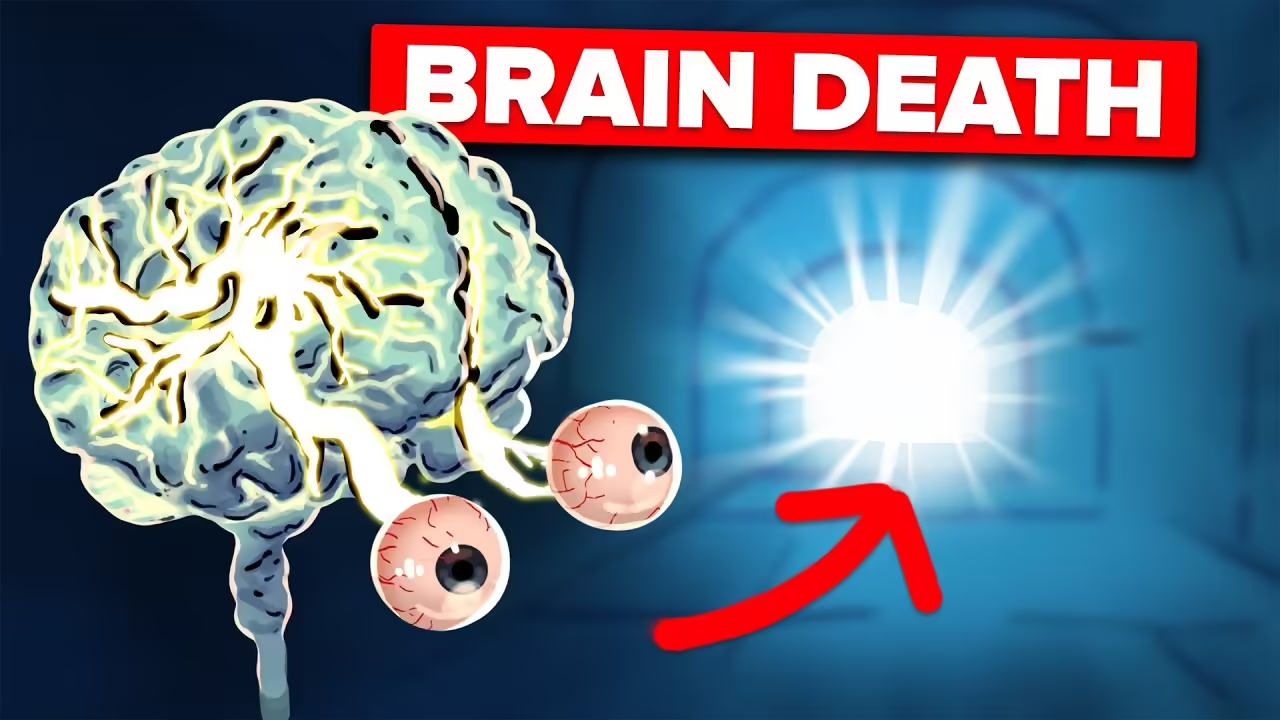Description of the Phenomenon
The phenomenon of life flashing before your eyes is an experience reported by many people, especially in situations of extreme danger or near-death. This experience is commonly described as a rapid succession of memories and significant moments from a person’s life, as if they are watching a movie in their mind. Although science has not yet fully explained this phenomenon, its recurrence and the similarities in reported experiences suggest that it is a real and significant aspect of the human experience.
The phenomenon of life flashing before your eyes generally occurs in moments of crisis, such as accidents, serious illnesses, or imminent risk situations. During these episodes, people report seeing scenes from their lives, from childhood to the present, in a series of rapid images or memories. These memories do not always follow a chronological order and often focus on emotionally significant or important moments.
Some theories suggest that this phenomenon is a response of the brain to extreme stress situations, where an intensified form of memory review is activated. The brain, facing an imminent threat, might be trying to quickly process relevant information to make critical survival decisions. Others suggest that it could be a manifestation of brain activity in its final moments, a last effort to find meaning and connection.
Anecdotal Experiences
Over the years, many people have shared their experiences of seeing their life flash before their eyes. These accounts vary in details but share common characteristics, such as the speed of the memories and the emotional clarity of the images.
Example 1: Traffic Accident Survivor A woman who survived a severe traffic accident recounted how, at the moment the car began to skid out of control, she saw a series of images from her life. “I saw my graduation, my wedding, the births of my children, all in a matter of seconds. It was like watching a movie reel at high speed,” she explained. “I didn’t feel fear at that moment, just deep sadness for what I might lose.”
Example 2: Near-Death Experience During Illness A man who suffered a heart attack also shared his experience. During the time he was clinically dead before being revived, he recalled seeing “flashes of light and then images from my childhood, my friends, happy and sad moments.” For him, it was a reminder of how precious life is and how even small moments can have a profound impact.
Cultural Perspectives
The phenomenon of life flashing before your eyes is also reflected in various cultures and spiritual traditions. In many religions, there is the belief that at the end of life, one reviews their actions and experiences.
Buddhism: In Buddhism, there is the Bardo Thodol, or Tibetan Book of the Dead, which describes the process of death and rebirth. According to this text, upon dying, the soul reviews its life and actions, which is an opportunity to attain enlightenment.
Christianity: In Christianity, there are stories of people who, near death, see a “life review” and their actions being judged. This review is considered preparation for eternal life, where one is confronted with their achievements and sins.
The Scientific Study of the Phenomenon of Life Flashing Before Your Eyes
The scientific study of the phenomenon of life flashing before your eyes has been conducted by several researchers in the fields of neuroscience, psychology, and medicine. A notable team of researchers in this field comes from the University of Michigan, in the United States, led by Dr. Jimo Borjigin, a neuroscientist who has focused her research on near-death experiences and brain activity in critical moments.
Another prominent group comes from the University of Southampton, in the United Kingdom, under the direction of Dr. Sam Parnia, who has extensively researched near-death experiences (NDEs) and the brain activity associated with these experiences.
Methods and Technologies Used in the Research
Electroencephalography (EEG): One of the primary methods used to study the phenomenon of life flashing before your eyes is electroencephalography (EEG), which measures the electrical activity of the brain. During near-death experiences, researchers have recorded patterns of brain activity that suggest a significant increase in consciousness, even at times when the brain would be expected to be inactive.
Functional Magnetic Resonance Imaging (fMRI): Functional magnetic resonance imaging (fMRI) is another key technology used to observe changes in brain activity. This method allows researchers to visualize which areas of the brain are activated during extreme stress or danger situations. fMRI studies have shown that regions associated with memory and emotion, such as the hippocampus and amygdala, exhibit intense activity during these experiences.
Clinical Studies and Surveys: In addition to brain imaging technologies, researchers have conducted clinical studies and surveys with people who have had near-death experiences or have been in extreme danger situations. These studies collect data on individuals’ perceptions and memories during these events. The results often include detailed descriptions of how people experienced a rapid review of their lives.
Experiments on Animal Models: Some studies have also used animal models to better understand the phenomenon. For example, in a study published in the journal Proceedings of the National Academy of Sciences, researchers from the University of Michigan observed brain activity in rats in the moments following cardiac arrest. They found a significant increase in brain activity, suggesting that the brain may experience a burst of conscious activity just before death.
Analysis of Near-Death Experience (NDE) Cases
Dr. Sam Parnia and his team at the University of Southampton have conducted extensive studies on NDEs, analyzing clinical cases and conducting detailed interviews with cardiac arrest survivors. These studies have focused on correlating patients’ subjective reports with objective medical data, seeking patterns and similarities in reported experiences.
Key Findings of the Study on the Phenomenon of Life Flashing Before Your Eyes
Scientific studies on the phenomenon of life flashing before your eyes have revealed several interesting findings regarding changes in the brain in the moments before and after death.
Increase in Brain Activity: One of the most surprising findings comes from the study conducted by Dr. Jimo Borjigin and her team at the University of Michigan. Using electroencephalography (EEG) in animal models, specifically in rats, researchers observed that immediately after cardiac arrest, there was a significant increase in brain activity. This activity reached higher levels than those recorded in normal waking states.
Synchronization of Brain Waves: Another notable finding was the synchronization of brain waves in areas associated with cognition and consciousness, such as the hippocampus, prefrontal cortex, and cingulate gyrus. This synchronization indicates a possible integration of information in the brain during critical moments, which could explain why people experience a coherent and structured review of their lives.
Activity in Key Regions: Studies using functional magnetic resonance imaging (fMRI) have also shown intense activation in specific regions of the brain, such as the amygdala and hippocampus, which are associated with memory and emotions. This suggests that these areas play a crucial role in generating the images and memories that people experience during this phenomenon.
Interpretation of These Changes by Scientists
Brain Hyperactivity as a Stress Response: Scientists interpret the increase in brain activity as a response of the brain to extreme stress. According to Dr. Borjigin, this burst of activity might be an evolutionary response designed to maximize the chances of survival in imminent danger situations. The brain, facing an existential threat, could be rapidly reviewing memories and experiences to find solutions or responses that might be useful.
Last Effort of Brain Processing: Another interpretation is that this hyperactivity represents the brain’s last effort to process information and find meaning. Dr. Sam Parnia suggests that in the final moments, the brain might be integrating all stored information in an effort to create a coherent narrative of a person’s life. This could explain why near-death experiences often include a detailed review of significant moments.
Role of Emotions and Memory: The activation of the amygdala and hippocampus suggests that emotions and memories play a central role in this phenomenon. Scientists believe that the brain, facing the possibility of death, prioritizes emotionally significant memories, which could explain why people see images of important events in their lives. This prioritization could be a way to find comfort and meaning in the final moments.
Possible Implications for Understanding Consciousness
These findings also have broader implications for our understanding of consciousness. The fact that the brain shows such intense and organized activity in the final moments suggests that consciousness might be more resilient than previously thought. This raises interesting questions about the nature of consciousness and its relationship to brain activity.
The Science Behind Near-Death Experiences
Explanation of Near-Death Experiences (NDEs): Near-death experiences (NDEs) are phenomena reported by people who have been on the brink of death or have been clinically declared dead but then revived. These experiences are often profoundly impactful and transformative and often include a series of common characteristics.
Common Characteristics of NDEs
Sensation of Floating Outside the Body: Many people report a sensation of separation from the physical body, often with the ability to observe the environment from an external perspective.
Traveling Through a Tunnel: A common experience is the sensation of being drawn through a dark tunnel toward a bright light.
Encounters with Beings or Entities: Some recount encounters with deceased loved ones, religious figures, or entities of light radiating peace and love.
Life Review: Many people report seeing their life flash before their eyes, reviewing significant events and their interactions with others.
Feelings of Peace and Unconditional Love: NDEs often include intense feelings of peace, love, and well-being that transcend any earthly experience.
Proposed Causes for NDEs
The causes of NDEs are a subject of debate in both the scientific and spiritual communities. Some scientific explanations include:
Cerebral Anoxia: The lack of oxygen in the brain, common in cardiac arrest or extreme trauma situations, can cause hallucinations and out-of-body experiences.
Release of Neurotransmitters: The massive release of neurotransmitters such as serotonin and endorphins in the dying brain could produce sensations of euphoria and visions.
Residual Brain Activity: Some studies suggest that the brain can experience a spike in activity even after the heart has stopped beating, which could explain the visions and sensations reported during NDEs.
Relation Between NDEs and Study Findings
Increase in Brain Activity: The findings of the study led by Dr. Jimo Borjigin at the University of Michigan, showing a significant increase in brain activity immediately after cardiac arrest, provide a neurophysiological basis for NDEs. This intense brain activity could generate the vivid perceptions and sensations reported by NDE survivors.
Synchronization of Brain Waves: The synchronization of brain waves in areas associated with memory and emotion, observed in electroencephalography (EEG) studies, suggests that the brain is integrating memories and emotions in a final processing effort. This might explain the life review and encounters with deceased loved ones, as these experiences focus on emotionally significant memories.
Activation of Key Regions: The activation of the amygdala and hippocampus, observed in functional magnetic resonance imaging (fMRI) studies, supports the idea that NDEs are deeply rooted in the brain’s memory and emotion systems. These regions are crucial for the formation and retrieval of memories, as well as for the regulation of emotions, which can explain the sensations of peace and unconditional love.
Implications for Consciousness: The fact that the brain shows organized and synchronized activity in critical moments suggests that consciousness might be more resilient than previously thought. This raises the possibility that NDEs are not simply hallucinations or products of a dying brain but reflect an advanced form of cognitive processing in the final moments of life.








